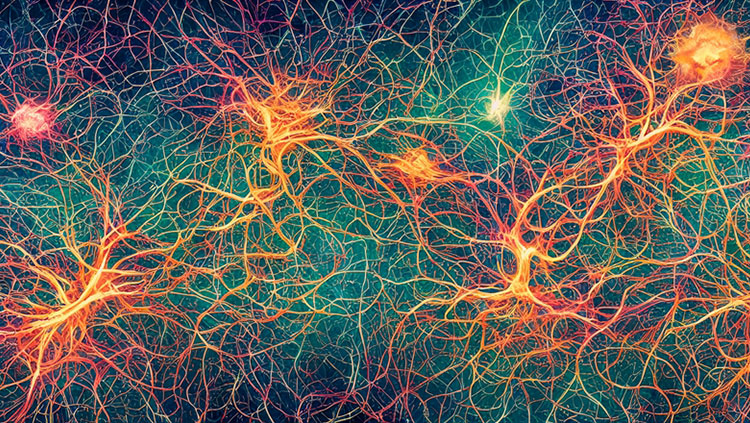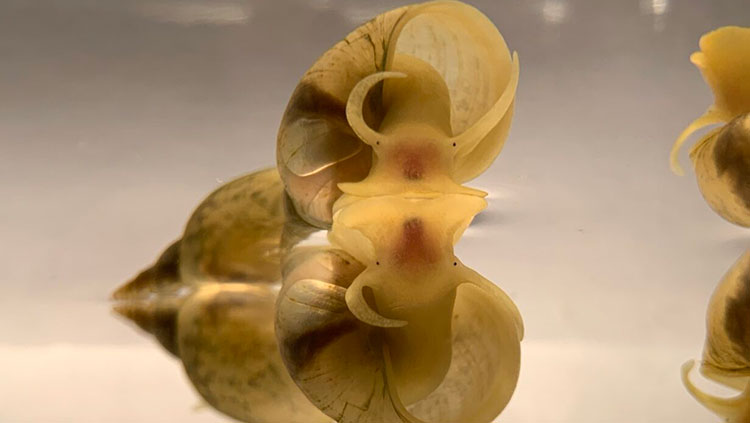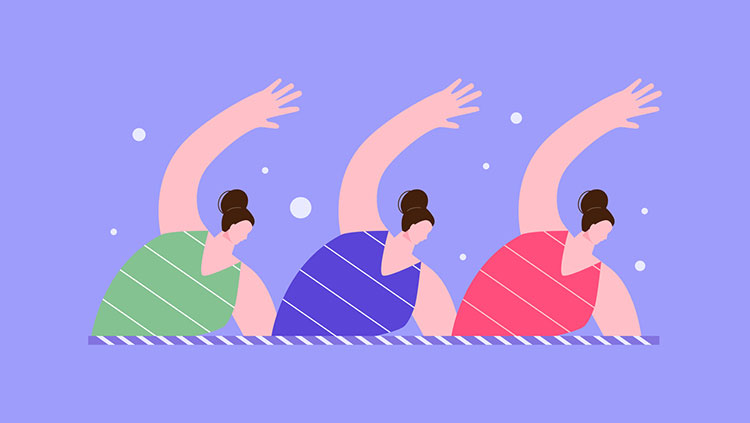Kids Need Brain Breaks — And So Do Adults
- Published9 Jan 2020
- Author Fiona Tapp
- Source BrainFacts/SfN

Brain breaks help children by replenishing attention, improving learning, and boosting creativity. But, it turns out we might all benefit from giving our brains more downtime. Here’s why.
Breaks Replenish Attention
Focusing on a task takes mental effort. That’s especially true for children, whose attentional systems are still developing, says Karrie Godwin, a developmental psychologist at Kent State University. “Maintaining attention in formal learning environments is really quite difficult for young kids.” Godwin led a 2016 study that found children were less attentive as lessons increased from 10 to 30 minutes.
In the typical elementary school classroom, the teacher’s voice, the hum of the HVAC system, a fidgeting classmate, or brightly colored posters adorning the walls all compete for student’s attention. As we’re processing all that information, we want to focus and try to ignore distractions. “Our attentional resources may be depleted over time,” says Godwin.
Brain imaging studies back this up. In a 2010 study, researchers tracked cerebral blood flow as participants performed a test assessing their vigilance and reaction time. They found blood flow to regions of the brain involved in vigilance decreased over the 20-minute testing period, which correlated with worsening reaction times.
When we focus on a task, our brains devote more processing resources to areas that will boost our performance, says study author Julian Lim. Mental fatigue might be a signal that we’re expending too much energy relative to the benefit we’ll get from staying on task, so the brain withdraws these resources, he says.
Breaks can mitigate this: numerous studies show interspersing brief bouts of physical activity can keep children on-task and focused. In 2013, Lim and colleagues from the National University of Singapore found brain waves indicative of mental fatigue — theta waves — increase during bouts of sustained attention but decrease during breaks.
Breaks “help us improve our focus by reducing boredom and restoring energy and motivation to resume on-task activity,” Lim says.
Breaks Improve Learning
Breaking learning up into several, short chunks of time is better than cramming learning into one block. Called the “spacing effect,” it’s one of the most replicated phenomena in psychology and education, says Haley Vlach, an educational psychologist at the University of Wisconsin-Madison. Scientists have documented it in a range of animals — from humans all the way down to the humble sea slug.
In a 2008 study, Vlach found toddlers recalled the names of novel objects better when they were given a 30-second break between each presentation of an object.
Spacing may be effective because it gives us time to forget. “Forgetting forces you to practice remembering information,” Vlach says. “That practice retrieving information from the past helps you later when you need to retrieve that information for a final test.”
Brain breaks might work the same way. “I think people are scared to take breaks because they think learning stops,” Vlach says. “But learning doesn’t stop during a break. The brain is still doing things with that information you took in.”
Breaks Boost Creativity
Whenever you’re awake but not focused on a task — like when you daydream — you activate a network of brain regions called the default mode. It turns out this network is important for many of the brain’s more complex feats, like creative thought.
Lots of studies show breaks help facilitate creative insight and problem-solving. In one, researchers found young adults were twice as likely to find the hidden shortcut to a math problem if they were given a 10-minute break. In another, breaks consisting of a simple task helped participants think up novel uses for ordinary objects. Compared to people who rested or who didn’t get a break at all, the people in this group reported their minds wandered more and that seemed to support creative insight.
Developing the default mode network and cultivating creative thought requires time and space children don’t often get in the classroom.
Traditional schooling often “overtaxes and over-privileges the development of … task-oriented productivity,” says Mary Helen Immordino-Yang, a neuroscientist and developmental psychologist at the University of Southern California. It prioritizes the concrete, the here and now. But this might backfire. Brain networks develop through lived experience. Keeping kids in a state of focused productivity may limit opportunities to develop their default mode mental capacities. We may be inadvertently “undermining their ability to become agentic, curious lifelong learners,” Immordino-Yang says.
Additional reporting and writing by Alexis Wnuk
CONTENT PROVIDED BY
BrainFacts/SfN
References
Baird, B., Smallwood, J., Mrazek, M. D., Kam, J. W. Y., Franklin, M. S., & Schooler, J. W. (2012). Inspired by Distraction: Mind Wandering Facilitates Creative Incubation. Psychological Science, 23(10), 1117–1122. doi: 10.1177/0956797612446024
Craig, M., Ottaway, G., & Dewar, M. (2018). Rest on it: Awake quiescence facilitates insight. Cortex, 109, 205–214. doi: 10.1016/j.cortex.2018.09.009
Godwin, K. E., Almeda, Ma. V., Seltman, H., Kai, S., Skerbetz, M. D., Baker, R. S., & Fisher, A. V. (2016). Off-task behavior in elementary school children. Learning and Instruction, 44, 128–143. doi: j.learninstruc.2016.04.003
Howie, E. K., Beets, M. W., & Pate, R. R. (2014). Acute classroom exercise breaks improve on-task behavior in 4th and 5th grade students: A dose–response. Mental Health and Physical Activity, 7(2), 65–71. doi: 10.1016/j.mhpa.2014.05.002
Li, J., Lim, J., Chen, Y., Wong, K., Thakor, N., Bezerianos, A., & Sun, Y. (2016). Mid-Task Break Improves Global Integration of Functional Connectivity in Lower Alpha Band. Frontiers in Human Neuroscience, 10, 304. doi: 10.3389/fnhum.2016.00304
Lim, J., Quevenco, F.-C., & Kwok, K. (2013). EEG alpha activity is associated with individual differences in post-break improvement. NeuroImage, 76, 81–89. doi: 10.1016/j.neuroimage.2013.03.018
Lim, J., Wu, W., Wang, J., Detre, J. A., Dinges, D. F., & Rao, H. (2010). Imaging brain fatigue from sustained mental workload: An ASL perfusion study of the time-on-task effect. NeuroImage, 49(4), 3426–3435. doi: 10.1016/j.neuroimage.2009.11.020
Masini, A., Marini, S., Gori, D., Leoni, E., Rochira, A., & Dallolio, L. (2019). Evaluation of school-based interventions of active breaks in primary schools: A systematic review and meta-analysis. Journal of Science and Medicine in Sport. doi: 10.1016/j.jsams.2019.10.008
Vlach, H. A. (2014). The Spacing Effect in Children’s Generalization of Knowledge: Allowing Children Time to Forget Promotes Their Ability to Learn. Child Development Perspectives, 8(3), 163–168. doi: 10.1111/cdep.12079
Vlach, H. A., & Sandhofer, C. M. (2012). Distributing Learning Over Time: The Spacing Effect in Children’s Acquisition and Generalization of Science Concepts: Spacing and Generalization. Child Development, 83(4), 1137–1144. doi: 10.1111/j.1467-8624.2012.01781.x
Vlach, H. A., Sandhofer, C. M., & Kornell, N. (2008). The spacing effect in children’s memory and category induction. Cognition, 109(1), 163–167. doi: 10.1016/j.cognition.2008.07.013


















